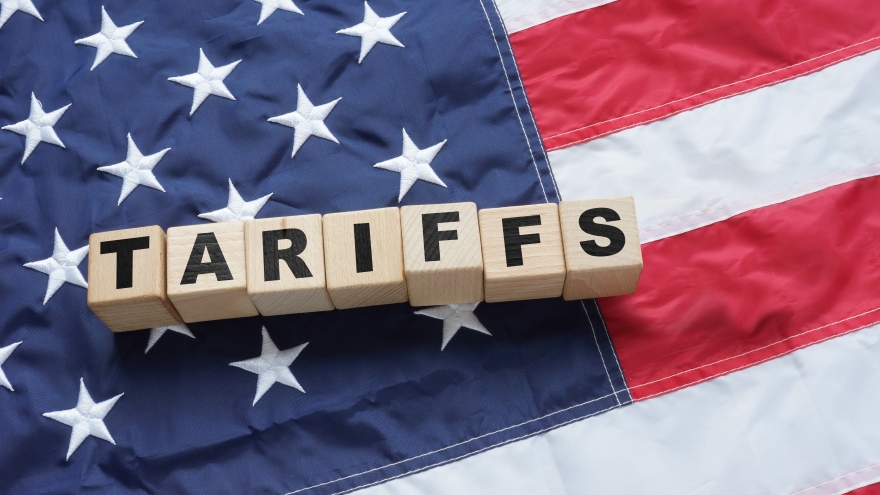J.D. Power offers more predictions associated with ‘extremely fluid’ tariffs

Last week, J.D. Power completed its newest analysis of the recently imposed tariffs on imported vehicles and auto parts, which experts said are expected to significantly affect both consumers and the automotive industry in the United States.
But J.D. Power stressed this point before delving into the data and breakdown: “Please note, however, that this issue is extremely fluid, and this analysis could change at any time.”
Since potentially changing at any time sounds like the car business in a nutshell, J.D. Power began with where things stand in April, which is:
—A 25% tariff on vehicles coming from overseas
—A 25% tariff on vehicles produced in Canada and Mexico — less U.S. parts content
—No tariffs for U.S. production but 25% on major parts sourced from the rest of the world
In terms of U.S. retail sales, J.D. Power calculated that current tariff exposure is approximately $62 billion for the industry, which translates to an average of $4,782 per vehicle.
Within this average, however, Thomas King pointed out there is a great deal of variability between manufacturers.
The president of data and analytics and chief product officer at J.D. Power explained the current tariff structure creates a pronounced level of asymmetry across the industry, with brands that rely heavily on imported vehicles and components facing steeper cost increases than those with more localized production and supply chains.
King projected this asymmetry will create an imbalance even within the brand portfolios of individual manufacturers. However, due to the competitive nature of the market — coupled with tariff asymmetry — King also said it will be challenging for highly tariffed brands to simply pass on those price increases to buyers while still maintaining profitability.
“Asymmetry makes it almost impossible for highly tariffed brands and models to increase prices without large volume declines,” King said in a news release. “In order to maintain reasonable volumes, a large portion of tariffs must be absorbed.”
That landscape prompted this question. How will manufacturers, dealers and shoppers respond?
If the current market persists, J.D. Power indicated highly tariffed brands will need to decide how much of the tariffs they can pass on to consumers while still maintaining adequate volume levels.
In terms of product portfolios, J.D. Power also explained that manufacturers will need to decide whether to keep low-margin, high-tariff models.
“This may involve reallocating vehicle supply to less tariff-affected markets and leveraging excess manufacturing capacity in North America to ramp up local production and reduce exposure to tariffs,” analysts said.
“At the same time, manufacturers also will need to optimize their parts sourcing strategies, carefully balancing the cost efficiency of global suppliers against the added burden of tariffs,” they continued.
To maintain a balance between consumer demand, managing vehicle lineups and existing inventory and supply, J.D. Power anticipates that manufacturers will absorb a great deal of the increased cost created by tariffs.
“When the dust settles by the end of the year,” J.D. Power projected that the average new-vehicle price to increase 5% — or $2,300 — while the annualized retail sales pace is expected to decrease 8%, or 1.1 million sales.
“It should be noted, however, that there are a large range of potential responses to current tariffs, and the volume effect could be as low as 5% or as high as 12% from pricing actions alone. Furthermore, any degradation in the health of the overall economy could lead to further volume contraction,” analysts said.
J.D. Power pointed out that a strong sales pace for new vehicles happened during the first quarter with expectations for a similar situation to unfold during Q2 because many buyers are pulling ahead their vehicle purchases from pre-tariff inventory still on dealer lots.
But starting in May or June, J.D. Power said the industry may see the first wave of price increases as new, tariff affected vehicles start arriving at dealers.
“Moving into Q3, there will be emerging clarity around manufacturer responses to tariffs. Vehicle prices are anticipated to rise approximately 3% to 5%, and the broader economic effect of the tariffs will begin to emerge, affecting both shopper demand and industry performance,” analysts said.
“By Q4, the market is likely to settle into the first phase of a ‘new normal,’ with average vehicle prices up around 5%. Manufacturers will need to fully assess their respective strategies, and any tariff mitigation measures, such as localized production, revised sourcing and market reallocation, will start to yield results,” J.D. Power went on to say.


